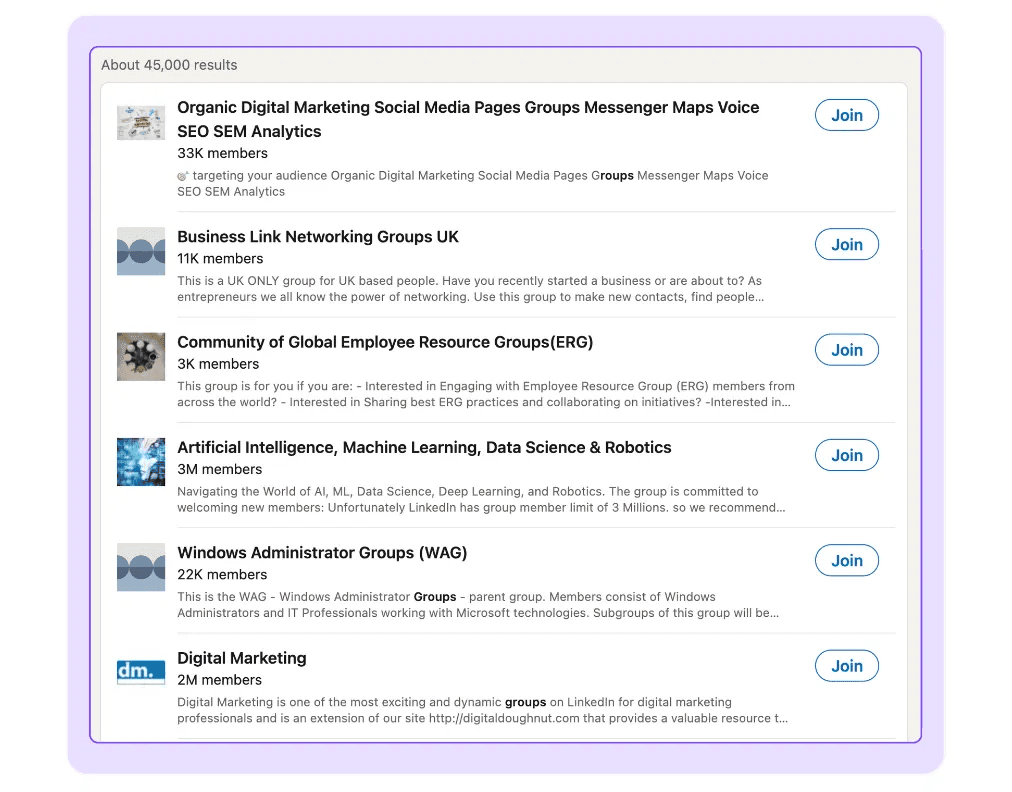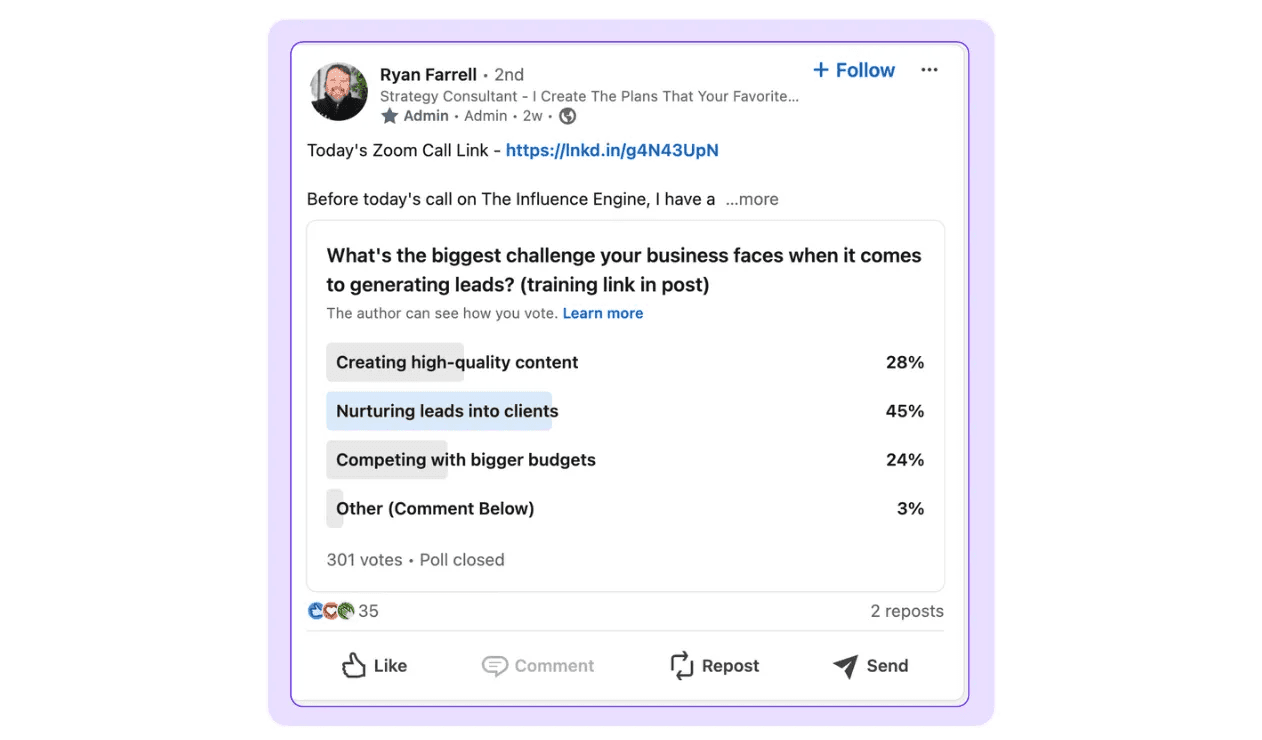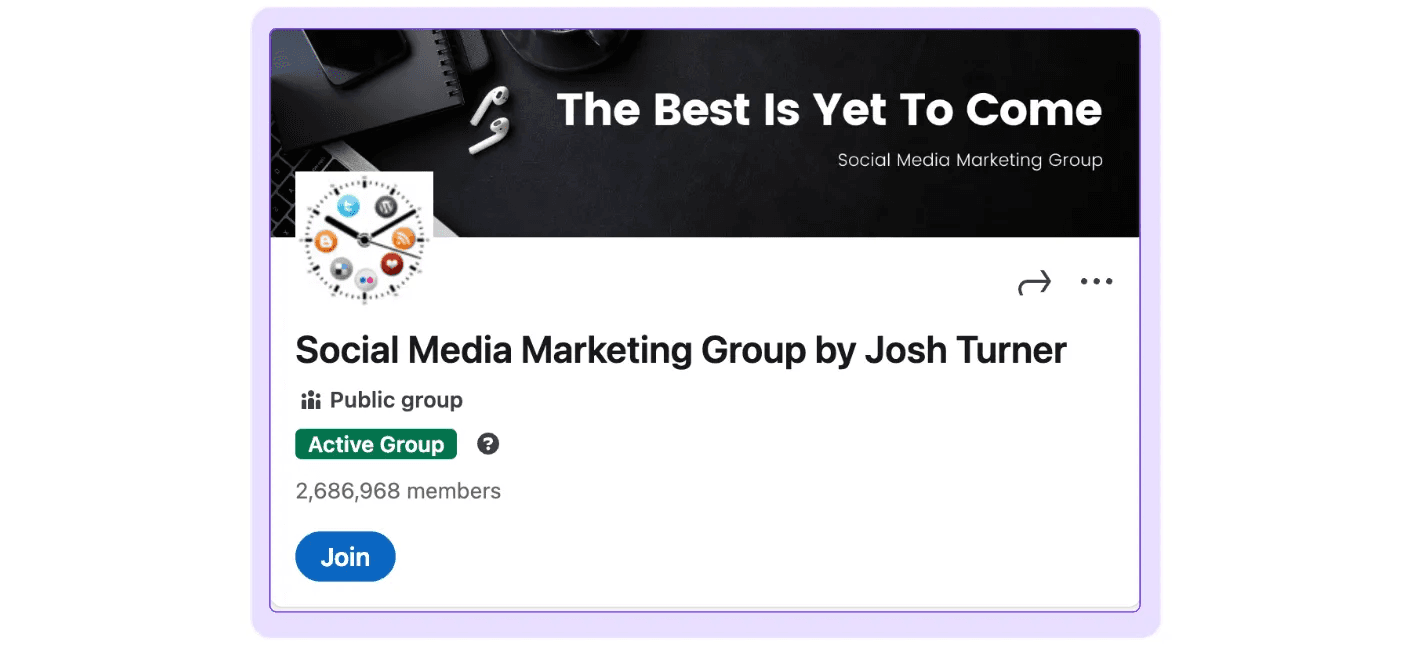LinkedIn Basics

Yasmina Akni Ebourki
Last updated: Nov 20, 2025
LinkedIn is a platform with over 1 billion users and creators, making it a goldmine for networking opportunities.
But how do you find people in your sector or industry? That’s where LinkedIn groups come in.
If you’re struggling to find people who share your interests or those you’d like to connect with, the easiest solution is to find or create your own LinkedIn group.
Today, I’ll explain what LinkedIn groups are, how they work, how to become an active member, how to keep your LinkedIn group engaged, and, finally, how to create and grow your own group.
TL;DR: LinkedIn groups are excellent for networking around shared interests. Find active groups by searching for keywords, and contribute value through consistent engagement. If you create a group, keep it active by moderating discussions and encouraging members to participate.
What are LinkedIn Groups and Communities?
LinkedIn Groups and Communities are dedicated spaces on LinkedIn where those with shared interests can come together to discuss, learn, and collaborate together, it's a great way to expand your network.
These are themed hubs, for example, around industries, skills, or challenges, where members and moderators drive conversations. In other words, they’re powerful tools to expand your network, share value, and build meaningful engagement around a common topic.
For businesses and creators, they offer a targeted way to build authority, connect with high-intent audiences, and spark conversations that naturally grow visibility and trust.
If it’s a private group, members join by invitation. If the group is open to everyone, people join because they’re interested in the topic, industry, or discussion at hand.
How to Identify Groups Relevant to Your Niche
There are countless LinkedIn groups of all kinds. However, the key is to find a group that interests you or is related to your sector.
What can truly make an impact—whether you’re new to LinkedIn or have some experience but want to better target your niche—is finding active LinkedIn groups that focus on relevant topics.
To identify groups you want to join, start by searching for one or more by title in the LinkedIn search bar.

For example, you can search for terms like "copywriting," "marketing," or "sales."
Once the group pages appear, read the group description, which will typically outline the purpose of the group.
There are groups for truly every profession, below are just some of the best LinkedIn Groups for entrepreneurs that are worth joining if you want to learn, connect, and stay ahead in your industry.
Executive Suite: Designed to bring executives together to share leadership tips, decision-making insights, and experiences. With more than 380,000 members, you’ll get access to a supportive community, helpful discussion boards, and the group’s engaging web series.
Startup Specialists Network Group: With over 1 million members, this group brings together startups, mentors, founders, and investors in one big, supportive community. A great place for entrepreneurs to find guidance, business-building tips, crowdfunding advice, networking insights, and plenty more to help them grow.
Social entrepreneur Empowerment Network: A welcoming space for purpose-driven entrepreneurs who want to create positive change through their work. This group brings together like-minded people so they can support each other and move their meaningful missions forward.
Female Entrepreneur Association: If you're a female entrepreneur this is the group for you. With around 12,000 members to share inspiration, ideas, motivation and raise awareness with.
Young Entrepreneur Connections: A group made up of a variety of young professionals looking to connect and learn from one another. If you're a young professional looking to find and grow with likeminded individuals this could be the group for you.
Entrepreneurs Meet Investors: An excellent space for entrepreneurs looking for funding or businesses aiming to fuel their next stage of growth, a networking space to turn ideas into action.
Evaluating Group Activity and Engagement Levels
The second step is to take a close look at the group page and analyze the description.
This is typically written by the group’s main administrator and will explain what the group is about, as well as whether it’s open to participation, allowing you to comment, post, and share your content.
In this description, you’ll be able to determine if the group covers topics that interest you.
Additionally, a useful technique is to analyze who is already in the group.
You might find people you’d like to connect with because they work in the same market or industry, offering an opportunity for direct networking.

Most importantly, it’s crucial to assess the activity level of the group.
Check when the last post or comment was made.
If the group has been inactive for a long time, it likely won’t provide much value, as most of its members have probably stopped engaging.
There’s little benefit in joining a group where no one communicates anymore because it has been abandoned.
Becoming an Active Group Member
Once you’ve explored various LinkedIn groups and found the perfect one that you believe will provide value—and vice versa—it’s time to start interacting.
Contributing Valuable Insights to Group Discussions
When you post, remember that it shouldn’t be just anything; it needs to be relevant to the group’s topic and add value.

Additionally, engage by commenting and reacting to other people's posts.
This will help you gradually make yourself known and position yourself as an expert in your field.
It goes without saying that if your goal is to build connections, being passive won’t get you far. Simply joining a group to observe what others share won’t help you achieve that.
The key is to be active—share valuable insights, engage with content from other creators, and react to meaningful posts.
By doing so, you’ll gradually build a strong network and establish connections within the group.
There are many types of posts you can adapt to your industry to add value to the group, such as:
Case studies: Share real-world examples that demonstrate successful strategies or lessons learned from your experience.
Industry news and trends: Post relevant updates, reports, or trends related to your sector, sparking discussions and keeping members informed.
How-To guides and tips: Provide practical advice, step-by-step guides, or tips to help other members solve problems or improve their skills.
Running Your Own LinkedIn Group Successfully
If you’ve started by joining a group to understand how it works and later decide to create your own, the goal isn’t just to have people join—it’s about keeping the group alive.
You can achieve this by asking questions, generating interaction, and giving members the freedom to share their thoughts.
Additionally, connect with members, send messages, and foster a sense of community.
If you've spent time exploring different groups and feel ready to launch your own LinkedIn group, that’s great!

The initial goal is to gradually attract people to join and add value.
The first thing you need to focus on is the message of your group—what is it for? What topics will be covered? What makes your group unique? What kind of rules will apply?
This is crucial because those who join need to clearly understand the purpose of the group.
By having a well-defined niche, you’ll attract the right members, unlike a broad group that tries to cover too many topics.
Take time to craft a precise and engaging description in the "About" section, outlining exactly what the group will focus on.
Be as creative as you like with this description to make it stand out.
You can take inspiration from some of the most successful groups, such as Search Engine Land or Social Media Marketing, which have managed to attract a specific audience and foster active discussions.

An important element to keep in mind is the LinkedIn Active Group Badge.
Groups that maintain consistent monthly conversation activity, where members regularly post and comment, are eligible to earn and retain this badge.
This badge appears on the group’s page and serves as a positive signal to attract new members.
Additionally, active groups are more likely to be discovered by LinkedIn members, significantly increasing your group’s visibility and engagement.
Strategies for Keeping Your Group Engaged and Active
Once you’ve built your community, don’t expect it to thrive on its own.
You need to be an active moderator, regularly sending invitations, reaching out to people directly on LinkedIn, or emailing those in your industry who may be interested.
The goal here is not to wait for people to take action, but to be proactive in seeking out individuals to help grow your community.
Additionally, as more people join, you’ll gain valuable data and insights, which allows you to use the group more effectively to foster engagement.
Another strategy is to invite members from similar groups you’re already part of by sharing a link to your group, highlighting that it will cover more in-depth or specific topics.

However, be careful not to go overboard—this isn’t an open door for just anyone to join.
If you're not selective, you might attract people who spam or disrupt the quality of interactions between members.
Finally, pay close attention to anyone using the group for advertising, job hunting, or sharing inappropriate content that doesn’t align with the group’s purpose or LinkedIn’s terms and services.
Keeping the group focused and well-moderated is essential for its success.